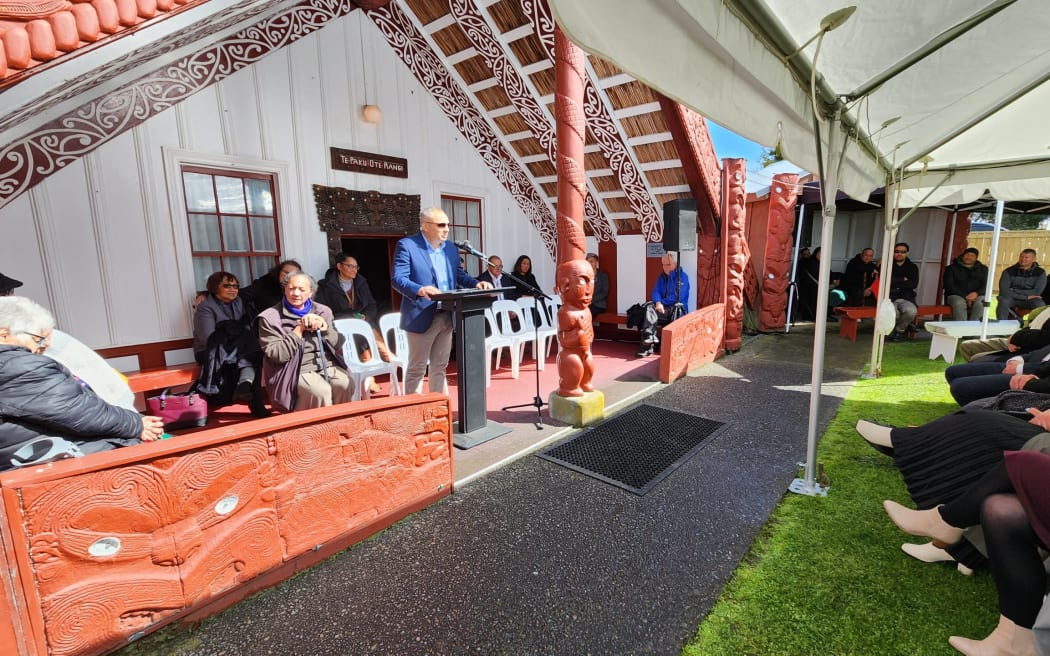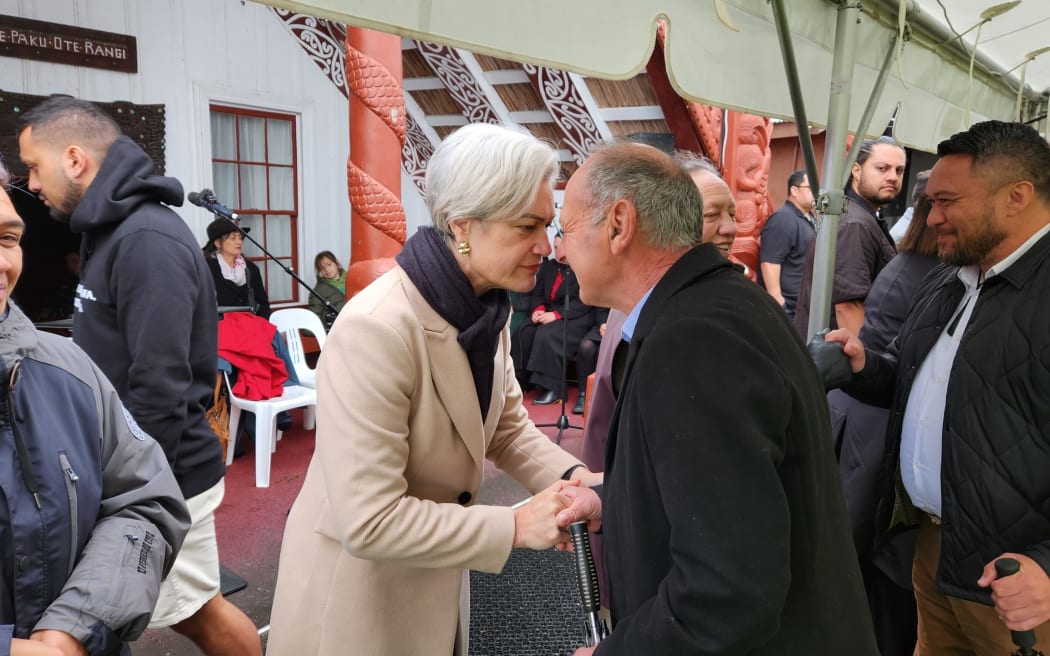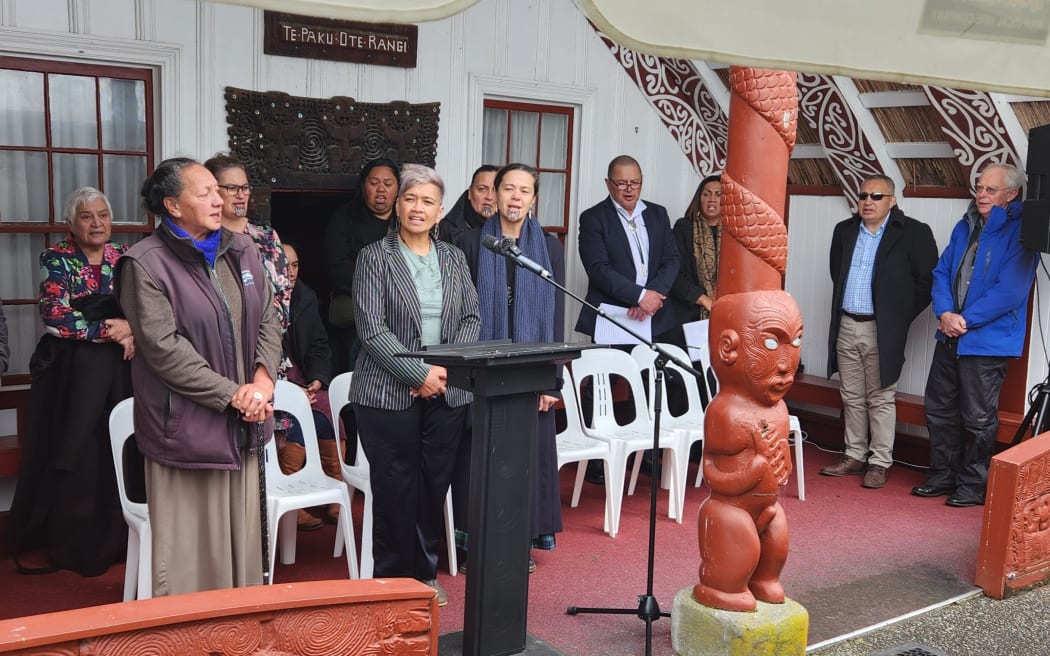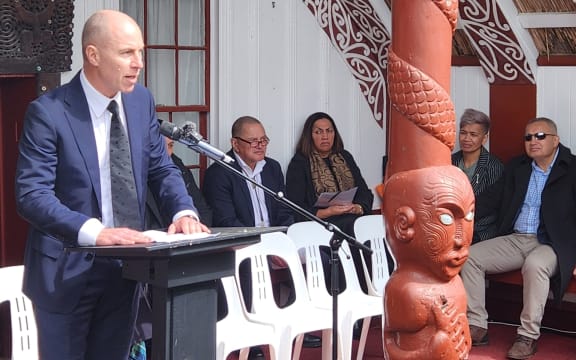
Photo: LDR / Moana Ellis
Iwi of the Whanganui River expect a new strategy unveiled on Friday will reform resource management in the catchment.
Te Heke Ngahuru ki Te Awa Tupua was released for consultation by Te Kōpuka nā Te Awa Tupua, a 17-member strategy group made up of iwi, central government, mayors and council leadership, and industry and sector interests.
Four years in the making, the long-term strategy sets the direction for activities in the river catchment. It aims to bring health and wellbeing to the river system, Te Awa Tupua, by collaboration among those with interests in the catchment.
“This is a reform of the way we practice resource management in Te Awa Tupua,” Te Kōpuka chairperson Gerrard Albert said.

“Reform means change to improve the way something is done, and after 30-plus years of regional-based governance, and of the Resource Management Act, there is clear room for improvement and for a focus on this specific catchment.
“It starts with reforming the way we interact with one another, and that interaction is now through the kawa (Māori law and ethos) of the river, with hapū and iwi leading its adoption.”
Albert said the next five years would focus on investment, community engagement and building action plans.
The work would support the Crown, local government and the community to apply Tupua Te Kawa to planning and decision-making. Tupua Te Kawa is a centuries-old set of values upheld by hapū and iwi of the Whanganui River.
Albert said the next five years would establish the Awa Tupua framework as the foundation for resource management in the river catchment.

Photo: LDR / Moana Ellis
A key objective of the strategy was securing government investment, he said.
“Te Heke Ngahuru is clear about the resolve of this community to carry through with the mandate given by the Te Awa Tupua legislation.
“As with the current resource management and affordable water reforms, this framework stems from an act of Parliament. The Crown is therefore obligated to provide equitable investment to the statutory reform of this catchment.”
The strategy was unveiled in Whanganui at Pūtiki Marae on the banks of the river. After a pōwhiri, the ceremony began with a ruruku (incantation) followed by speeches from community and iwi leaders. The final address was made by Te Pou Tupua, Keria Ponga and Turama Hawira – the human face and voice of the legal status of Te Awa Tupua, accorded to the Whanganui River in 2017.
Hawira said a visionary strategy was needed to achieve major changes in the care and wellbeing of the river and its tributaries.
“Te Heke Ngahuru emphasises a community-led approach guided by indigenous values. These values are known as Tupua Te Kawa, which represent the essence of Te Awa Tupua. These ideas are being closely observed by indigenous and non-indigenous communities worldwide as they pave the way towards a more sustainable future.”
Ponga said the strategy would also focus on growing social, cultural and economic benefits for people. No single entity could achieve the high-level outcomes defined in Te Heke Ngahuru, she said.
“Significant engagement and collaborative processes will be required. We know Te Kōpuka is committed to working together to achieve these outcomes. [This strategy] is transformational, future focused and creates a framework linking long-term vision to pragmatic actions.”
Te Kōpuka was formed under the Te Awa Tupua (Whanganui River Claims Settlement) Act 2017 to collaborate in work to protect the river.
The group includes six iwi representatives, the mayors of Whanganui, Ruapehu and Stratford district councils, the chairperson of Horizons Regional Council, the Department of Conservation, Fish and Game New Zealand, Genesis Energy, and tourism, environmental, recreation and primary industry leaders. The group is also supported by the Ministry for the Environment through the Secretary for the Environment and senior managers.
Te Kōpuka deputy chairperson Hera Smith said members understood they had shared obligations to promote the health and wellbeing of the river system.

Photo: LDR / Moana Ellis
“It is clear to the membership of Te Kōpuka that we can do better under a common value set, with hapū and iwi leading the understanding of our common obligations under kawa. Adversarial processes will be replaced with relational processes, where hapū and iwi are relating as equitable voices in planning and decision making for the Awa.”
Environmental sector representative Keith Beautrais said organisations caring for the environment had been operating in silos for too long.
“The system has been geared to play to disparate or discrete interests and that ends today,” Beautrais told the large crowd at Pūtiki Marae.
“This taonga given to us all by the iwi is to humble ourselves to the awa first, then follow the well-established kawa of the tangata whenua to see the bigger picture and act accordingly.”
Whanganui mayor Andrew Tripe said the strategy had the awa and “all our people” top of mind and would guide decisions for a prosperous future.

Photo: LDR / Moana Ellis
“The strategy will provide the councils of our region and their decision-makers, policymakers and planners with guidance on applying the intent of Te Awa Tupua legislation to our work.
“This will require patience from all of us. We need to bring our communities to a combined place of understanding of the importance of the document we are celebrating today. We need to live and breathe it in our lives.”
Ruapehu mayor Weston Kirton said the strategy allows time for Te Kōpuka members to engage with their communities, understand perspectives and then plan for appropriate changes from 2028.
“Our community and council are right behind this strategy. Our voices are part and parcel of the awa because we are living on the upper reaches. We understand the importance of this new legislation that embraces the identity of the awa as a being that speaks for itself,” Kirton said.
“There’s a lot of work to be done. Being here today with our elected members demonstrates our willingness to cooperate and also share in the responsibility.”
Primary Industries representative Colleen Sheldon said farming communities would recognise the opportunity to cement planning at a local rather than regional level to meet national direction and targets, which change regularly.
“Having a clear and constant picture for our own catchment empowers us to find our own solutions,” Sheldon said.
Rangianiwaniwa Pehikino of Te Ihingārangi in the upper reaches said the day marked a “paradigm shift”.
“We begin to move into a collective standing where our hapū and iwi work with our communities, government entities, local and regional government for the wellbeing of our waterways. It is an approach from a collective view and not the usual hierarchical positionings that we have been used to.”
Te Kōpuka has opened consultation on the strategy. Submissions can be made on its website until 1 December and a series of public meetings will be held throughout the catchment over the coming months.
A final strategy will be published before the end of the year.
Local Democracy Reporting is Public Interest Journalism funded through NZ On Air